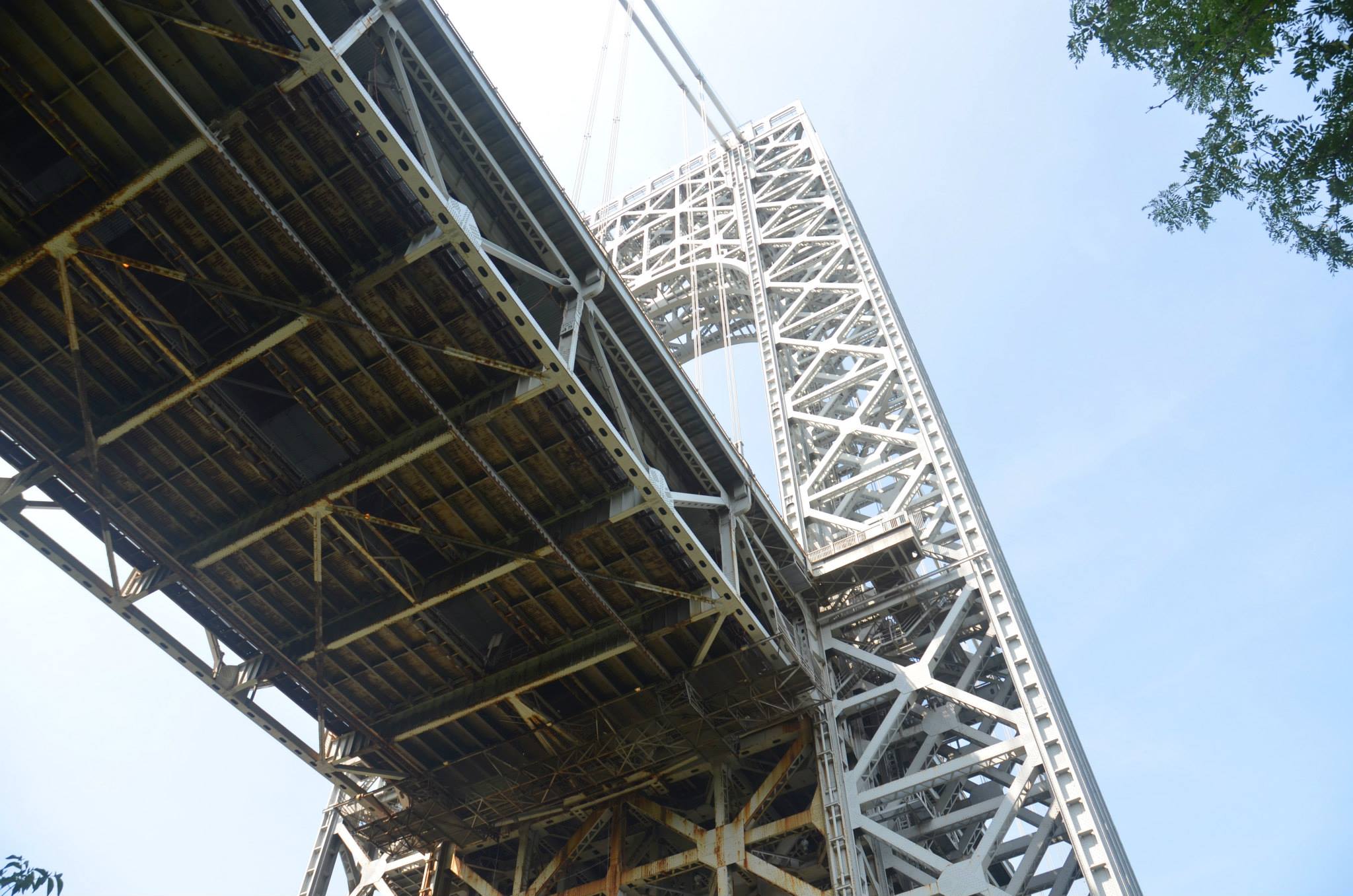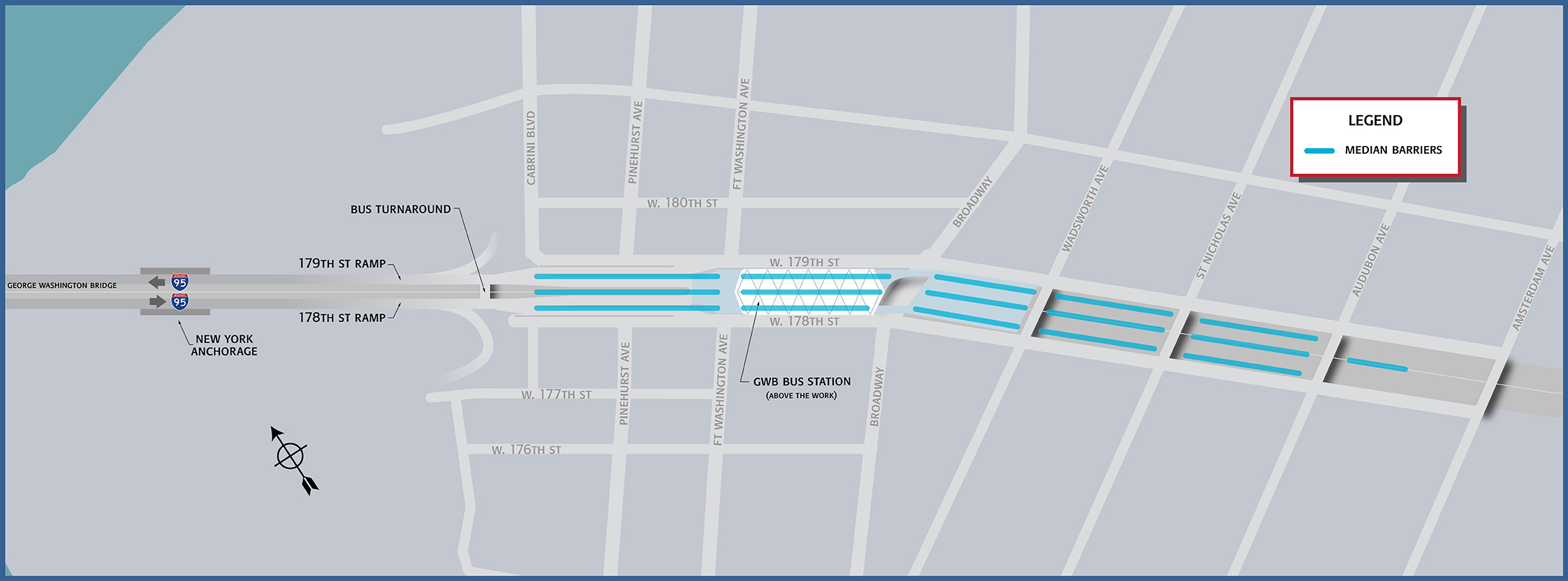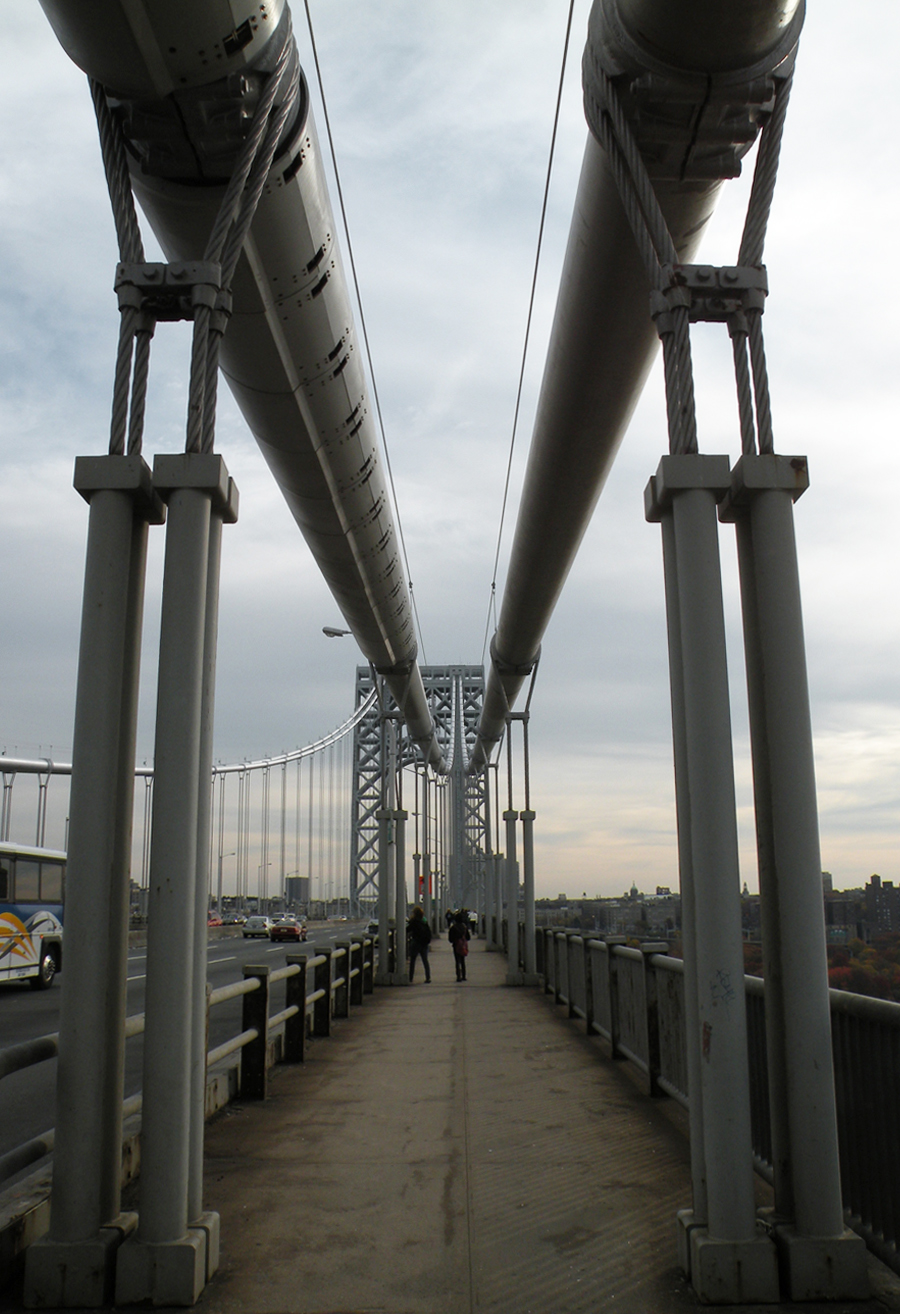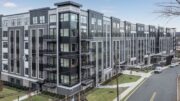We are living in a bit of a renaissance for New York City-area bridges. New spans are under construction for the Goethals, Kosciuszko, and Tappan Zee bridges, and the deck of the Bayonne Bridge is being raised. The world’s busiest bridge, the George Washington, is also having work done.
The span, which connects Fort Lee, N.J. with Washington Heights in Manhattan, opened in 1931. Cass Gilbert’s original design called for towers encased in stone, but it was Othmar Ammann’s simpler design, with its eternally modern feel, that was constructed. A lower level was always part of the plan for the bridge. Nicknamed Martha, for our first first lady, it opened in 1962.
Today, an average of over 300,000 vehicles cross the bridge every day. The traffic and weather together have taken their toll on the bridge, so the Port Authority of New York and New Jersey has embarked on an ambitious, decade-long rehabilitation effort called “Restoring the George.” A short video, released in December, explains the $1.9 billion project.
Given how vital the bridge is as one of only three vehicular crossings between New Jersey and Manhattan, we thought it would be a good time to look at the timeline for this work, some of which has already been completed.
Already Complete
Those who use the lower level, where trucks are prohibited and cash is rarely accepted, should already notice a smoother surface under their vehicles, since repaving wrapped in 2016.
Underway
Further work on the lower level is continuing, including repairs to its underside and supporting steel, along with the removal of lead paint and repainting. It also includes replacement of little-noticed movable maintenance platforms below the bridge, known as “travelers,” that slide across to repair exterior elements. This phase should be wrapped up this year.

The George Washington Bridge’s New York tower, with a “traveler” on the underside of the roadway. Photo by Evan Bindelglass.
Also underway is a project to replace the Palisades Interstate Parkway (PIP) helix. There are three toll plazas for the GWB, for the the upper level, the lower level, and one for drivers on the southbound Palisades Parkway, which leads to only the upper level.
To replace the PIP helix, a temporary helix will be constructed, and eventually dismantled, while the old one is reconstructed. The new helix will meet seismic code and provide a smoother ride. This phase will also include resurfacing the roadway sections that pass over Hudson Terrace and the bridge’s New Jersey anchorage. It is slated to be complete in 2019.
2017-2019
Those who drive over the bridge probably know the covered roadway that connects the Henry Hudson Parkway to Harlem River Drive simply as “under the apartments.” It’s actually called the Trans-Manhattan Expressway, and this phase will see its medians replaced along with the columns that hold up the George Washington Bridge Bus Station, which opened in 1963 and is receiving a facelift of its own.
Also between 2017 and 2019, the eastbound lanes of the upper level roadway will be rehabilitated, to provide a smoother ride. Final authorization for this project is still pending.
2017-2022
The approaches to the George Washington Bridge don’t just go over local roads in Fort Lee; bridges also carry Fletcher Avenue, Linwood Avenue, Center Avenue and Lemoine Avenue over the approaches. The Center and Lemoine overpasses will be re-decked and seismically retrofitted in this phase. The concrete girders of the Center Avenue overpass’s three spans will also be replaced with new steel girders.
2017-2023

Map showing ramps to be rehabilitated on the New York side of the George Washington Bridge. Credit: Port Authority.
This phase will include the replacement and seismic retrofit of the ramps to West 178th Street and from West 179th Street, the pedestrian/bicyclist ramps, and the bus ramps and bus turnaround at the bus station.
2017-2024
Also starting this year is perhaps the most ambitious piece of this entire project – the replacement of the bridge’s 592 vertical suspender ropes. They connect the roadway to the bridge’s four main cables and hold it up over the Hudson River. The Port Authority’s Neal Buccino sent YIMBY an explanation of how this will be performed:
The 592 suspender ropes are draped in pairs over a cable band that is clamped around one of the bridge’s four main cables. Pairs of ropes will be replaced sequentially, starting at the towers and moving outward toward the anchorages and center of the bridge. Pairs of ropes will be replaced at up to four locations on the bridge simultaneously. To remove a pair of existing suspender ropes, a pair of temporary ropes – designed to support the full load carried by the existing ropes – will be installed immediately adjacent to the existing ropes, and draped over temporary cable bands on the main cable. Another pair of temporary ropes will be installed to supplement the downstream pair of suspender ropes. Jacks will be used to transfer the load from the existing ropes to the temporary ropes. This will allow for removal and replacement of the existing ropes, as well as temporary removal of the main cable band shared by the pair of ropes. Prior to installation of the replacement suspender ropes, the cable band will be fully inspected and restored.
The main cables, which each contain 26,474 pencil-thin wires, will also be rehabilitated before they, and the anchorages, get new dehumidification systems. A computer-controlled array of fans and tubes will drive out moisture and keep it out by continuously pumping dry air across the 5,235-foot length of the main cables.

Graphic showing the suspender ropes, main cables, and anchorages of the George Washington Bridge. Credit: Port Authority
This process will keep them at 40 percent humidity, which will help limit corrosion. The GWB will be only the third suspension bridge in the country, after the Chesapeake Bay and Delaware Memorial bridges, to receive such a system, according to Buccino, who calls it “the equivalent of a supercharged, water-fighting immune system.”
The cables will also get a new acoustic monitoring system to monitor potential wire breaks.
Each of the four sidewalk approaches will be rehabilitated and made ADA accessible. The sidewalks themselves, on each side of the upper level, will also be replaced and get new 11-foot safety fencing and security enhancements. At present, only one sidewalk is usually open at a time, typically the southwalk. Following this work, both will be open simultaneously. However, the southwalk will be for pedestrians and those needing ADA access while the northwalk, with its view of the Palisades, will be for bicyclists. The Port Authority can’t yet say how much the new fences will obstruct the views.

The George Washington Bridge is seen from the Fort Lee Historic Park on October 10, 2011. Photo by Evan Bindelglass.
At present, the LED necklace lights on the main cables have one color. In order to change them to, for example, pink for breast cancer awareness in October, workers have to go up the cables to install, and then remove, gels on the lights. This phase of work will include new LEDs that can change color.
2018-2020
This phase, which has yet to receive final authorization, includes work on the steel on the upper level and replacement of the roadway finger joints, as well as 32 panels under the towers.
2019-2024
Remaining structural repairs to the underside of the bridge, including the removal of lead paint, will be performed at this stage.
Six overpasses take northbound and southbound local traffic over the Trans-Manhattan Expressway, on Fort Washington Avenue, Broadway, Wadsworth Avenue, St. Nicholas Avenue, Audubon Avenue and Amsterdam Avenue. This phase, still awaiting final authorization, would see those spans rehabilitated.
It’s a lot of time, hard work, and money to keep the George Washington Bridge and its 14 lanes operational, but the bridge needs some TLC and it’s good that it’s getting it.
Drive safely.
Subscribe to YIMBY’s daily e-mail
Follow YIMBYgram for real-time photo updates
Like YIMBY on Facebook
Follow YIMBY’s Twitter for the latest in YIMBYnews










